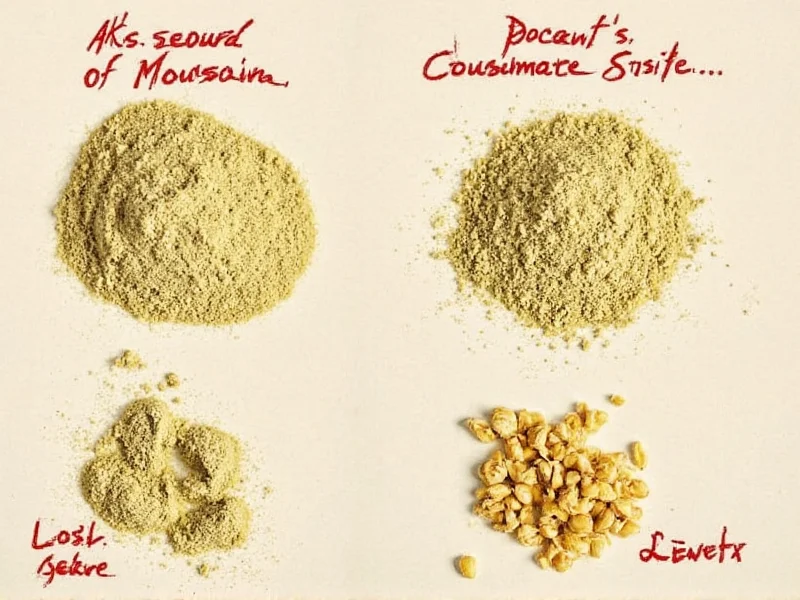Understanding ground mustard's unique properties transforms ordinary dishes into culinary masterpieces. This pantry staple works differently than prepared mustard, offering distinct advantages in various cooking techniques. When liquid activates ground mustard's enzymes, it creates that characteristic sharp flavor that mellows beautifully during cooking.
What Exactly Is Ground Mustard?
Ground mustard consists of dried mustard seeds pulverized into a fine powder. Unlike prepared mustard—which combines ground seeds with vinegar, water, and other ingredients—ground mustard remains dormant until liquid activates its enzymes. This chemical reaction produces allyl isothiocyanate, the compound responsible for mustard's signature heat and aroma. The powder form offers longer shelf life and greater versatility in recipes where liquid content must remain controlled.
Top 10 Culinary Applications for Ground Mustard
| Application | How It Works | Recommended Amount |
|---|---|---|
| Cheese sauces | Prevents separation and adds tang | 1-2 tsp per cup of cheese |
| Meat marinades | Breaks down proteins for tenderizing | 1-3 tbsp per pound of meat |
| Dry rubs | Enhances browning and flavor penetration | 1-2 tsp per rub mixture |
| Salad dressings | Acts as natural emulsifier | 1-2 tsp per cup of dressing |
| Vegetable preservation | Maintains vibrant color during cooking | 1/2-1 tsp per quart of cooking water |
Mastering Ground Mustard in Cooking Techniques
Successful incorporation of ground mustard requires understanding its activation process. For optimal flavor development, mix the powder with cold liquid first—water, vinegar, or wine—and let it sit for 10-15 minutes before adding to your recipe. This "blooming" period allows full flavor development without bitterness. In cheese sauces, adding ground mustard before the cheese melts prevents clumping while enhancing flavor distribution.
When using ground mustard in baking applications like pretzels or breads, combine it with dry ingredients first. The powder's fine texture distributes evenly without affecting dough consistency. For barbecue sauces and glazes, add ground mustard early in the cooking process to mellow its sharpness while retaining its complex flavor profile.
Ground Mustard vs. Prepared Mustard: When to Use Which
Understanding the difference between ground mustard and prepared mustard prevents recipe failures. Ground mustard provides concentrated flavor without additional liquid, making it ideal for dry applications and recipes where moisture control matters. Prepared mustard contributes both flavor and liquid, working better in dressings and finished sauces. When substituting one for the other, remember that 1 teaspoon of ground mustard equals approximately 1 tablespoon of prepared mustard, but requires additional liquid to activate properly.
Smart Substitution Options
Out of ground mustard? Several alternatives maintain similar flavor profiles. Prepared mustard works in wet applications but requires adjusting liquid content elsewhere in the recipe. Mustard seeds, crushed finely, provide similar flavor but with noticeable texture. Horseradish powder offers comparable heat with different flavor notes. For emulsifying properties, xanthan gum serves as a neutral alternative, though without the distinctive mustard flavor.
Optimal Storage Practices
Preserve ground mustard's potency by storing it in an airtight container away from light and heat. Properly stored in a cool, dark cupboard, it maintains peak flavor for 1-2 years. Avoid refrigeration, as moisture causes clumping and accelerates flavor loss. For extended storage, divide into small portions and freeze—this preserves potency for up to three years. Always use a dry spoon when measuring to prevent moisture contamination.
Nutritional Benefits Worth Noting
Beyond flavor enhancement, ground mustard offers notable nutritional advantages. Rich in selenium and magnesium, it supports metabolic function and bone health. The compound sinigrin shows potential anti-inflammatory properties in preliminary studies. Unlike prepared mustards that often contain added sugars and preservatives, pure ground mustard remains a clean, single-ingredient spice option. Its thermogenic properties may slightly boost metabolism, though effects are modest.
Expert Tips for Maximum Flavor Impact
Professional chefs maximize ground mustard's potential through strategic timing. Add it early in soup and stew preparations to allow flavors to meld, but incorporate it later in delicate sauces to preserve its bright notes. For meat dishes, combine ground mustard with salt and sugar in dry rubs—the salt enhances flavor penetration while sugar balances mustard's sharpness. When making mayonnaise or aioli, a pinch of ground mustard creates a more stable emulsion that resists breaking.











 浙公网安备
33010002000092号
浙公网安备
33010002000092号 浙B2-20120091-4
浙B2-20120091-4